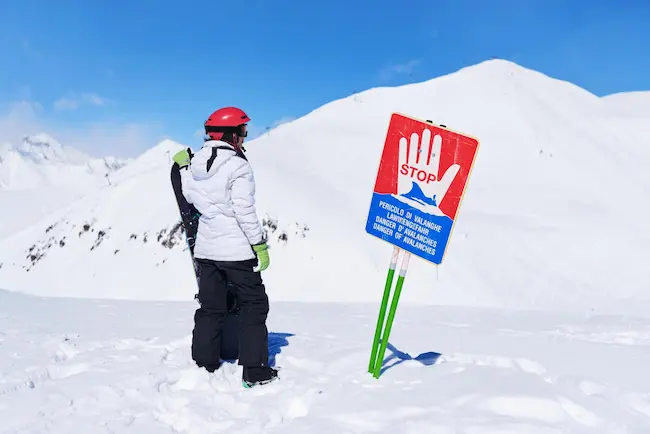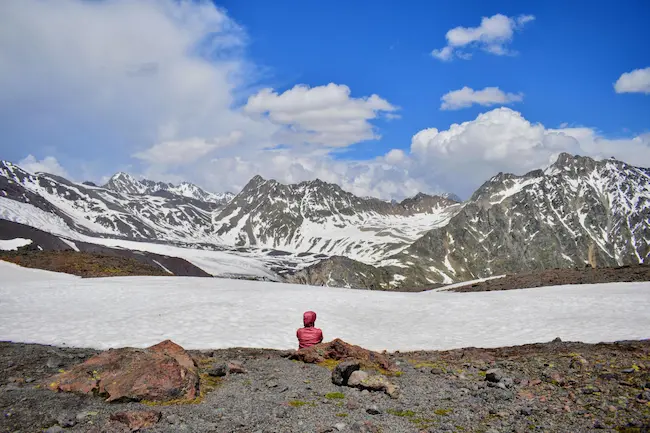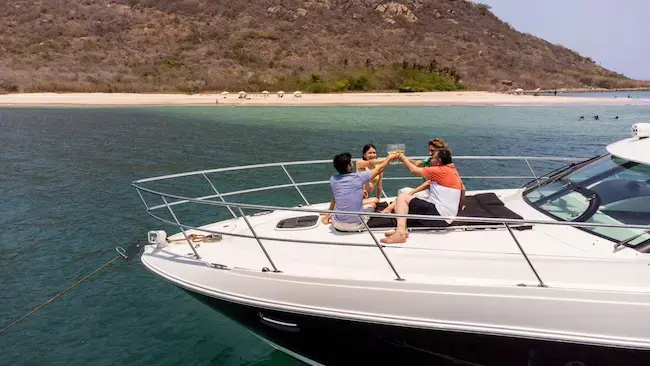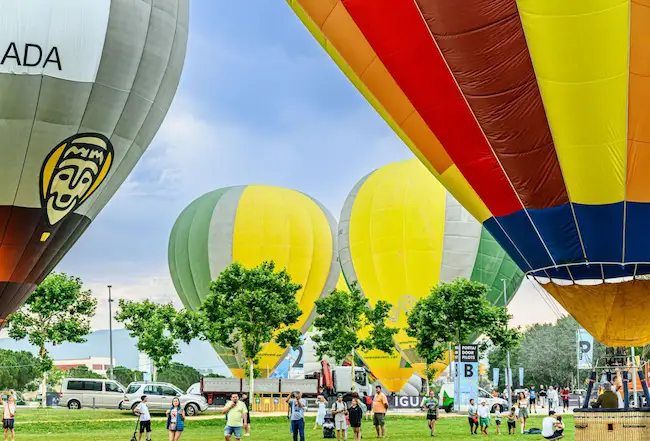The worst time to visit Alaska is during the late fall to early spring months, typically from October to April when temperatures drop significantly and daylight hours are scarce.
Set off on an adventure in Alaska. Think again before packing your bags for the late fall through early spring seasons. During these months, Alaska transforms into a frosty realm of darkness and biting cold, challenging even for the bravest souls. Discover why these times might make you want to postpone your northern escapade.
The period from October to April marks the least favourable time to explore Alaska. This season is characterized by frigid temperatures, limited daylight, and often inaccessible roads due to heavy snowfall. It’s a time when many attractions close down, and outdoor activities become more challenging and less enjoyable.

What is the Worst Time to Visit Alaska?
The least favourable time to visit Alaska is from late fall through early spring, specifically October to April. This period is marked by extreme cold, with temperatures that can plummet well below freezing, particularly in the interior and northern regions. Daylight becomes a rare commodity, significantly above the Arctic Circle, where the polar night can result in 24 hours of darkness in the deepest winter months. Additionally, snow and ice can make travel difficult, with many roads becoming impassable and outdoor activities limited by harsh conditions.
Best Time to Go to Alaska
Conversely, the summer months of June through August represent the best time to visit Alaska. During this period, the state enjoys its warmest weather, extended daylight hours (including the phenomenon of the midnight sun in the far north), and the full bloom of its natural landscapes. The peak season for tourism, with all services, from cruises to national park tours, operating at total capacity. Wildlife is more active and visible, and hiking, fishing, and exploring conditions are optimal.
Off-Season in Alaska
The off-season, spanning from September to May, encompasses both the shoulder months and the deep winter. Early in this period, in September and May, visitors can enjoy the tail end of summer activities or the beginning of winter’s unique offerings with fewer crowds and lower costs. However, as winter sets in, the drop in temperature and daylight may deter all but the most adventurous travellers despite the potential for savings and solitude.
The Hottest Month in Alaska?
July is typically the hottest month, with temperatures averaging between 60°F and 80°F (15°C to 27°C), depending on the region. Southern coastal areas enjoy mild temperatures, while the interior can experience warmer conditions. It is the ideal time for outdoor activities, from fishing to hiking in Alaska’s vast wilderness.
The Coldest Month in Alaska?
January is the coldest month across Alaska, with temperatures reaching as low as -30°F (-34°C) in some interior regions. This intense cold is accompanied by short days, limiting the amount of natural light available for activities and exploration.
Cheapest Time to Go to Alaska?
The cheapest time to visit Alaska aligns with its off-season, particularly from late September to early May. During these months, the demand for flights, accommodations, and tours drops, leading to significant discounts and deals for travellers. This period offers a unique opportunity to experience Alaska’s winter landscapes and phenomena like the aurora borealis at a lower cost.
For those looking to find the best deals on flights, the window from October to February typically offers the lowest prices. Airlines adjust their fares based on demand, which tends to be lower during Alaska’s winter months, allowing savvy travellers to secure better deals.
Best Month to Visit Alaska
July is often cited as the best month to visit Alaska due to its warm weather, long days, and the abundance of wildlife and activities available. This month strikes a perfect balance for exploring the diverse ecosystems and enjoying Alaska’s myriad outdoor activities.
Best Time to Visit Southern Alaska

The prime time to visit Southern Alaska, including popular destinations like the Kenai Peninsula and the coastal regions around Anchorage, is from May to September. This period avoids the coldest winter months, offering visitors a chance to enjoy milder weather and the region’s natural beauty in relative comfort.
Worst Time to Visit Southern Alaska?
Like the rest of the state, the period from October to April could be better for visiting Southern Alaska. The colder temperatures, increased precipitation in snow, and reduced daylight hours can limit access to some of the region’s attractions and outdoor adventures.
Best & Worst Time to Visit Anchorage
Anchorage, Alaska’s largest city, is best visited during the summer months of June to August. When the city is vibrant with festivals, outdoor markets, and accessible hiking trails. The worst time to visit Anchorage is from November to March, when cold temperatures and snow can limit urban exploration and outdoor activities.
Best & Worst Time to Visit Fairbanks
Fairbanks is an exceptional destination for experiencing the northern lights and is best visited from late August to early April for this purpose. However, for general tourism, May through September offers more comfortable weather and access to summer activities. While ideal for aurora viewing, the deep winter months present challenges with extreme cold and limited daylight.
What is the Best Time to Visit Northern Alaska?
The brief Arctic summer from June to August, is the best time to visit Northern Alaska. Including areas like the North Slope and the Brooks Range. This period allows for exploration under the midnight sun, with unique opportunities for wildlife.
What is the Worst Time to Visit Northern Alaska?
Harsh winter months from October to April constitute the worst time to visit Northern Alaska due to extreme cold and prolonged darkness. Travelling to remote areas becomes more challenging, and the conditions can be formidable for those unfamiliar with Arctic winters.
Best Weather in Alaska
Alaska’s best weather is found during the summer, with July being particularly notable for its relatively warm temperatures and extended daylight. This season allows for exploring and enjoying Alaska’s outdoor wonders.
Month-by-Month Weather in Alaska
· May: The snow melts, and the landscape begins to green, making late May a beautiful time for early summer activities.
· June: The start of peak tourist season with comfortable weather and the longest days.
· July: Peak warmth and activity, ideal for exploring Alaska’s vast wilderness.
· August: Cooler weather begins to set in, with late August seeing the first hints of fall.
· September: Cooler yet, with diminishing daylight, but excellent for viewing fall foliage.
· October to April: Cold and dark, defining the winter season with unique winter sports and aurora viewing opportunities.
Conclusion
While Alaska’s late fall through early spring months offer unique attractions. Such as the northern lights and winter sports, the extreme cold, limited daylight. The potential for difficult travel conditions make this period challenging for many travellers. The full breadth of Alaska’s natural beauty and outdoor activities should consider visiting during brighter summer months.
FAQs
What should I pack for a winter trip to Alaska?
Essential winter gear includes thermal layers, a waterproof outer layer, insulated boots, gloves, and a warm hat. Remember accessories like sunglasses for snow glare and skincare products to protect against cold and wind.
Can I visit national parks in Alaska during the winter? Yes, parks like Denali offer winter activities, but access and services are limited compared to the summer. Planning and preparation are crucial for a winter visit.
Are there any winter festivals in Alaska?
Alaska hosts several winter festivals including the Iditarod Trail Sled Dog Race and the Fur Rendezvous in Anchorage, offering unique cultural experiences.
Is it safe to drive in Alaska during the winter?
Winter driving in Alaska requires preparation and caution. Vehicles should be equipped with winter tyros, and drivers should be prepared for icy conditions and limited visibility.
How can I see the northern lights in Alaska? The best chance to see the lights of the north is during winter, away from city lights. Fairbanks is a popular base for aurora viewing, with many tours and lodges catering to this experience.


